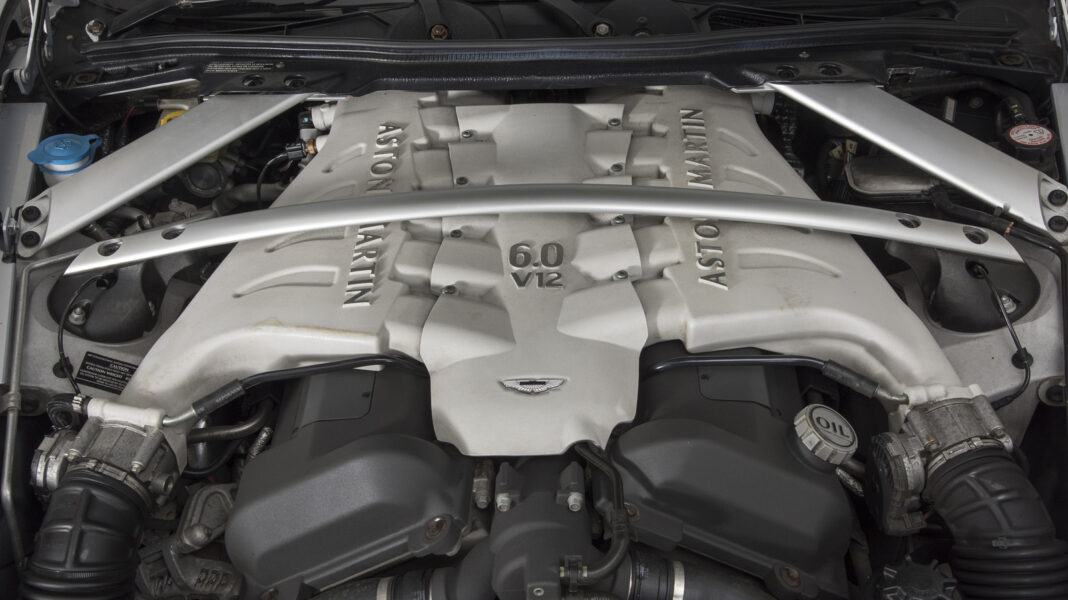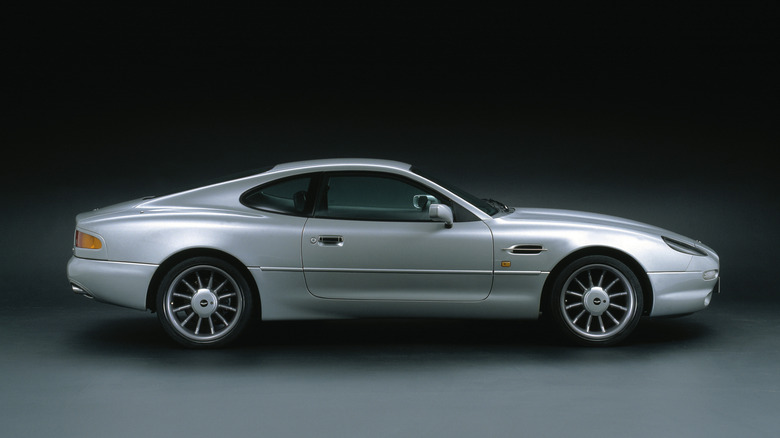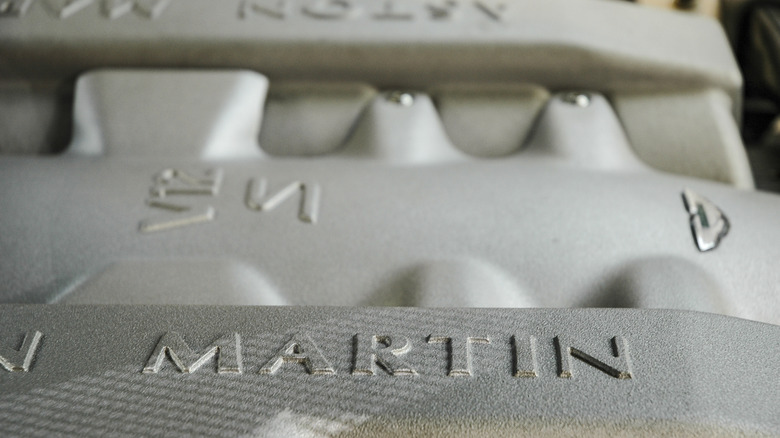In a world of constantly reducing engine sizes and cylinders, Aston Martin has consistently given us ear-splitting glory with its V12s. The brand’s current generation of engines, simply known as the AML V12, has been in service since 1999, appearing in Grand touring and track-focused models throughout the brand’s lineup, starting with the DB7.
The DB7 was introduced at the Geneva Motor Show in 1993 alongside Aston’s new concept for a four-door sedan: the Lagonda Vignale. The Lincoln Town Car-based mockup shared both the car’s chassis and its 4.6-liter 2-valve modular V8, although the production model was slated to have the brand-new V12 that Ford had been cooking.
That V12 was also on display, being presented as a future powerplant for the Vignale. The concept motor shared the power steering pump, A/C compressor, and alternator straight from the first-generation Mondeo. Moreover, the press began to notice weld lines on the block that weren’t fully hidden. It was no mystery that Ford’s Advanced Powertrain division had been at work developing the brand-new V12 for Aston Martin, but with many at Geneva putting two and two together, a massive rumor was born: Was this shiny new engine simply two V6s slapped together?
Putting it briefly, no. While some traits are similar between Ford’s Duratec V6 and the Aston V12, the two engines are far from being in the same family. However, the motor that would take the Aston Martin back to Le Mans, and power models throughout the brand’s lineup for decades, has far more American DNA than one might imagine.
The name’s Ford…
For a moment it was a moot point, as Aston’s new grand tourer would debut with a 3.2-liter supercharged straight six. While the Jaguar-built motor cranked out an impressive 340 horsepower, Ford and Aston knew it wouldn’t be enough for long, and by the time production began, it was decided that the car would eventually need a bigger engine.
Ford’s advanced powertrain division was given the task to design a brand new V12 that would debut in the DB7 Vantage. Built to tackle the 24 Hours of Le Mans, the motor had to combine low-end torque and high-revving power, as well as being future-proof for power gains and racing adaptations.
Chief Engineer Jim Clarke wanted to use the brand-new Duratec V6 as the base. On its way to debut in the Mondeo, the 2.5-liter, all-aluminum, four-valve engine could have been that perfect baseline for reliability and performance, and in theory could double up to form a V12. Engineers at Ford’s design center in Dearborn, Michigan, were already experimenting with the concept of using off-the-shelf parts and Frankenstein-ing two engines together, precision-welding sections of two of Ford’s modular V8s to make a V12, ending up in the weird and wonderful GT90 concept.
However, for a quick, non-running packaging study, engineers at ECS Roush welded three sections of the V6s together to make a concept for how much space the motor would take up. This would be the only incident of mashing Duratecs together, as the V12 would move onto a purpose-built block. However, it would be this very mockup that would make its way to the Geneva Motor Show and accidentally start a legend that would last decades in the car community.
What’s the difference?
If the block is indeed different, what’s shared between the Duratec and the V12? As described by former Ford Engineer Anthony Musci in his recap on developing the V12 on Design Judges, the familiarities are few and far between. Both shared the same bore and stroke of 3.5 inches (89.0 mm) by 3.12 inches (79.5 mm). Both also have twin cams per bank with 4 valves per cylinder. Most notably, some parts are shared between the two, with the piston assemblies and valvetrain being largely identical between the two.
That, however, is where the similarities end. While the bore and stroke are identical between the two, the main bearings on the V12s are beefed up to handle the added power. The cylinder block bank offset for the V12 is also completely different than the Duratec V6, since the V12s adopted a ‘common pin’ crankshaft design as opposed to the ‘split pin’ you usually see on 60-degree V6s.
Speaking of, the V12’s block and cylinder heads are made from a stronger high grade aluminum than its smaller counterpart. It also has a stronger bottom end, with the deep-skirt block and six-bolt mains making it perfect for higher power and higher-rpm loads, compared to the single-piece bedplate seen on the Duratec. The castings between the engines are also completely different, with the AML V12s having a precision water jacket for cooling and a unique intake port compared to the V6.
Although the engine’s Mondeo-based mumblings will go down in history as a rumor, one thing can go down as a fact: after two decades of evolution, Aston’s V12 can still be traced back to a couple of dudes in Dearborn, Michigan.


